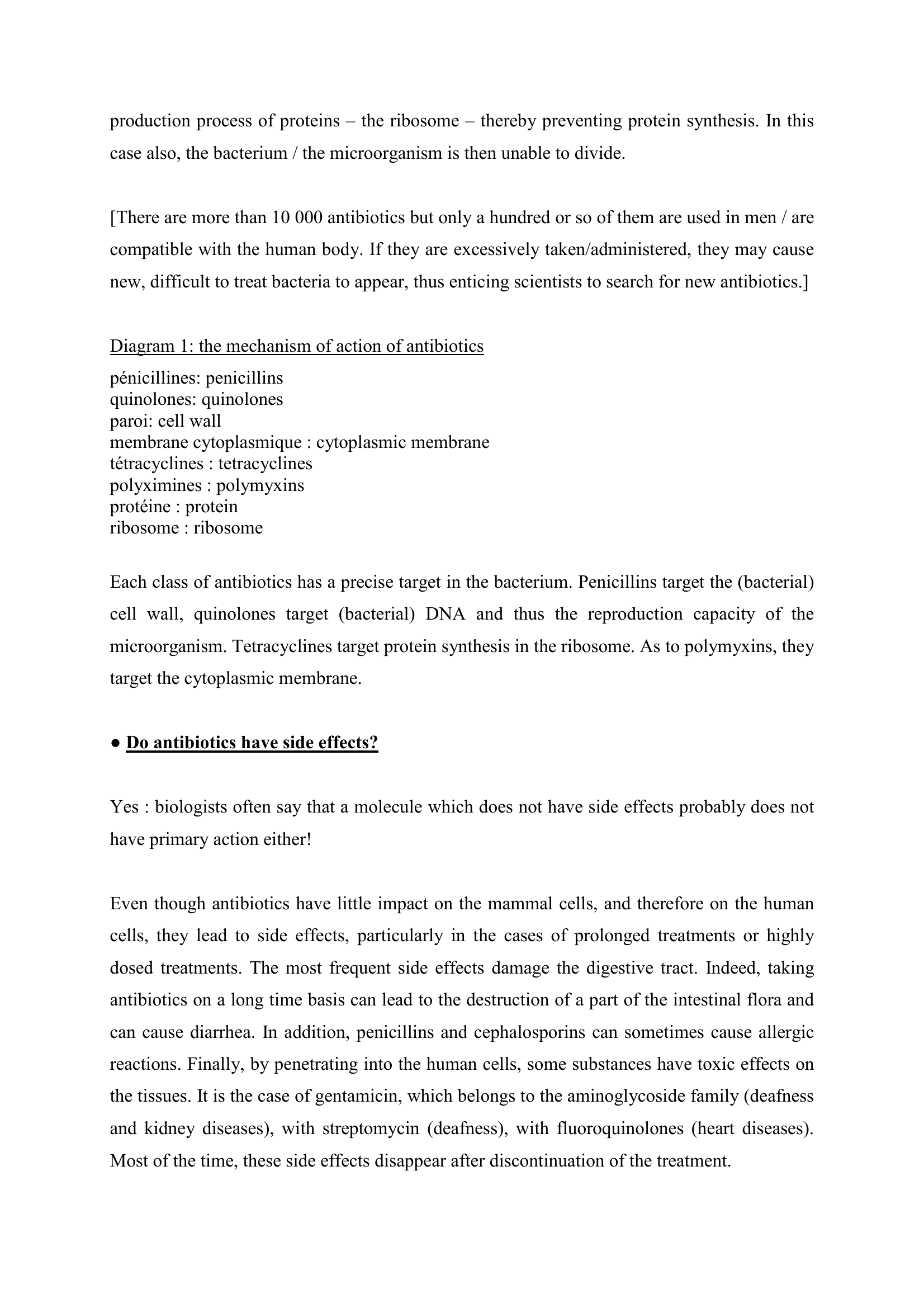Antibiotics
Publié le 25/03/2012

Extrait du document
● What an antibiotic is.
It is a chemical substance that, in small doses, acts againt specific molecular targets of metabolism or of the structure of bacteria and that inhibits their growth or kills them. By definition, it is produced by a microorganism (bacterium, microscopic funguses) such as the soil bacteria Streptomyces griseus that produces streptomycin, one of the most commonly used antibiotics in the world. The airborne fungus Penicillium notatum produces penicillin G. In a broader sense of the term, the word antibiotic also refers to antibacterials that are chemically modified from original compounds found in nature (these are semisynthetic antibiotics) or entirely created through chemical reactions (those are synthetic antibiotics). Some antibiotics have an effect against staphylococci, streptococci and pneumococci but are ineffective against Escherichia coli or salmonella. This is what distinguishes antibiotics from antiseptics. These are toxic for the cells of mammals, and so for human cells, that is why antiseptics are not used for internal use (for fear of possible intoxication) but exclusively for external use.
«
production process of proteins – the ribosome – thereby preventing protein synthesis.
In this
case also, the bacterium / the microorganism is then unable to divide.
[There are more than 10 000 antibiotics but only a hundred or so of them are used in men / are
compatible with the human body.
If they are excessively taken/administered, they may cause
new, difficult to treat bacteria to appear, thus enticing scientists to search for new antibiotics.]
Diagram 1: the mechanism of action of antibiotics
pénicillines: penicillins
quinolones: quinolones
paroi: cell wall
membrane cytoplasmique : cytoplasmic membrane
tétracyclines : tetracyclines
polyximines : polymyxins
protéine : protein
ribosome : ribosome
Each class of antibiotics has a precise target in the bacterium.
Penicillins target the (bacterial)
cell wall, quinolones target (bacterial) DNA and thus the reproduction capacity of the
microorganism.
Tetracyclines target protein synthesis in the ribosome.
As to polymyxins, they
target the cytoplasmic membrane.
● Do antibiotics have side effects?
Yes : biologists often say that a molecule which does not have side effects probably does not
have primary action either!
Even though antibiotics have little impact on the mammal cells, and therefore on the human
cells, they lead to side effects, particularly in the cases of prolonged treatments or highly
dosed treatments.
The most frequent side effects damage the digestive tract.
Indeed, taking
antibiotics on a long time basis can lead to the destruction of a part of the intestinal flora and
can cause diarrhea.
In addition, penicillins and cephalosporins can sometimes cause allergic
reactions.
Finally, by penetrating into the human cells, some substances have toxic effects on
the tissues.
It is the case of gentamicin, which belongs to the aminoglycoside family (deafness
and kidney diseases), with streptomycin (deafness), with fluoroquinolones (heart diseases).
Most of the time, these side effects disappear after discontinuation of the treatment..
»
↓↓↓ APERÇU DU DOCUMENT ↓↓↓





